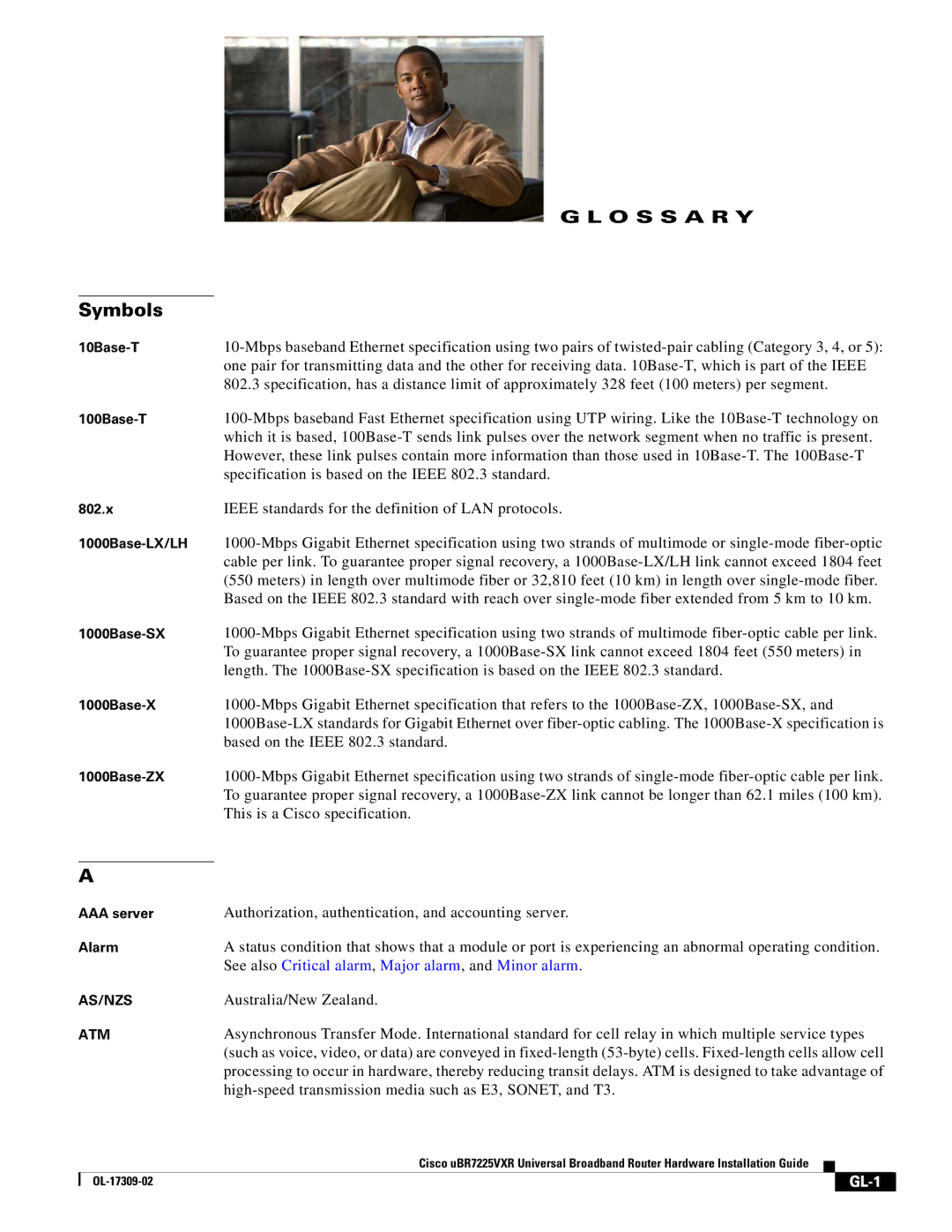G L O S S A R Y
10-Mbps baseband Ethernet specification using two pairs of twisted-pair cabling (Category 3, 4, or 5): one pair for transmitting data and the other for receiving data. 10Base-T, which is part of the IEEE 802.3 specification, has a distance limit of approximately 328 feet (100 meters) per segment.
100-Mbps baseband Fast Ethernet specification using UTP wiring. Like the 10Base-T technology on which it is based, 100Base-T sends link pulses over the network segment when no traffic is present. However, these link pulses contain more information than those used in 10Base-T. The 100Base-T specification is based on the IEEE 802.3 standard.
IEEE standards for the definition of LAN protocols.
1000-Mbps Gigabit Ethernet specification using two strands of multimode or single-mode fiber-optic cable per link. To guarantee proper signal recovery, a 1000Base-LX/LH link cannot exceed 1804 feet (550 meters) in length over multimode fiber or 32,810 feet (10 km) in length over single-mode fiber. Based on the IEEE 802.3 standard with reach over single-mode fiber extended from 5 km to 10 km.
1000-Mbps Gigabit Ethernet specification using two strands of multimode fiber-optic cable per link. To guarantee proper signal recovery, a 1000Base-SX link cannot exceed 1804 feet (550 meters) in length. The 1000Base-SX specification is based on the IEEE 802.3 standard.
1000-Mbps Gigabit Ethernet specification that refers to the 1000Base-ZX, 1000Base-SX, and 1000Base-LX standards for Gigabit Ethernet over fiber-optic cabling. The 1000Base-X specification is based on the IEEE 802.3 standard.
1000-Mbps Gigabit Ethernet specification using two strands of single-mode fiber-optic cable per link. To guarantee proper signal recovery, a 1000Base-ZX link cannot be longer than 62.1 miles (100 km). This is a Cisco specification.

